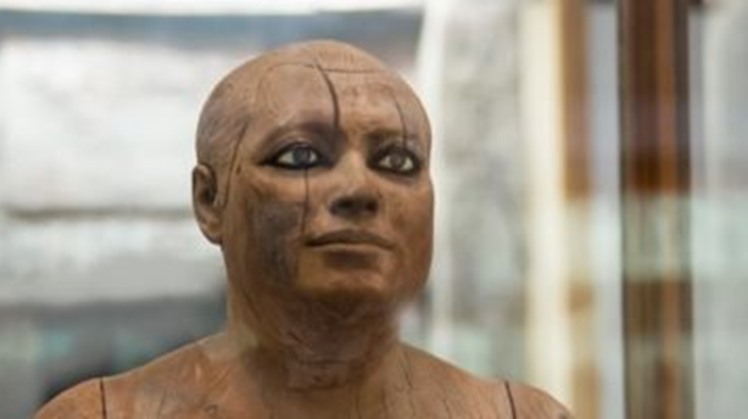Today, we shed light on an archaeological piece, which is the "Statue of Kabar" or "Sheikh Al-Balad", and we continuously review a piece with its image and some information about that piece and the place of its display, as well as the era to which it belongs.
This beautiful piece is "Ka'bar", which Mariette's excavation workers called "Sheikh al-Balad", as it resembles the mayor of their village, and it is the common name until now, even among non-Egyptians.
"Ka'bar" is a fat man that may reflect the shape of the wealthy. His eyes are inlaid with calcite, crystal and black stone, and are outlined with copper from the outside, imitation of eye makeup. All this besides the features of the face gave life to this statue. The left (the current version is counterfeit), and the statue is in a walking position with his left foot advancing forward. It was found in the Saqqara archaeological area. It dates back to the Old Kingdom, Fifth Dynasty "2465-2323 BC."
The Egyptian Museum in Tahrir, in the heart of Cairo, includes the largest collection of ancient Egypt’s antiquities, containing more than 136 thousand Pharaonic antiquities, in addition to hundreds of thousands of antiquities in its stores. On June 29, 1835 AD, Muhammad Ali Pasha ordered the establishment of the Antiquities Authority and the Egyptian Museum , and assigned their management to Youssef Zia Effendi, under the supervision of Refa'a Al-Tahtawi.
The story of the museum’s founding began with the great global interest in Egyptian antiquities after deciphering the Rosetta Stone by the French scientist Champollion. And entrusted their management to Youssef Zia Effendi, under the supervision of Refa'a Al-Tahtawi.
After the death of Muhammad Ali, antiquities were stolen again, and his successors followed the gifting approach, so the museum’s holdings dwindled, and in 1858 AD, “Mariette” was appointed as the first warden to occupy the antiquities, which is what currently corresponds to the head of the Antiquities Department. Choosing the Bulaq area to establish a museum of Egyptian antiquities and transfer to it the antiquities that were found during his excavations, "such as the traces of the tomb of Ahhotep."
In 1863 AD, Khedive Ismail approved the project to establish a museum of Egyptian antiquities, but the project was not implemented, but rather gave Mariette a place in front of the Anti-Khana House in Bulaq to expand his museum. In 1881 AD, in the same year Mariette died and was succeeded by "Maspero" as Director of Antiquities and the Museum.
In 1890 AD, when the collections of the Bulaq Museum increased, they were transferred to the Saray of Giza, and when the scientist “De Morgan” came as head of the interest and the museum, he re-arranged these collections in the new museum, which was known as the Giza Museum. But Maspero returned again to run the department and the museum from 1899 - 1914, and in 1902 he transferred the antiquities to the current building of the museum "in Tahrir Square." One of his most active assistants in his second period of work was the Egyptian scientist Ahmed Pasha Kamal, who was the first to specialize in antiquities. Ancient Egyptian and worked for many years in the museum.
The first Egyptian director of the museum was Mahmoud Hamza, who was appointed in 1950. The museum had a brief guide written by Maspero dating back to 1883, but he made a large guide for the new museum, which has been printed and repeated from 1915 until now.
 Thu, Jul. 21, 2022
Thu, Jul. 21, 2022